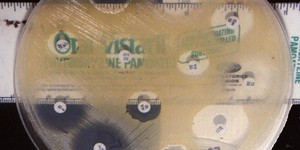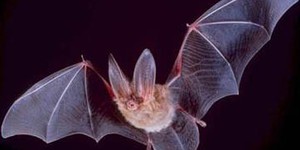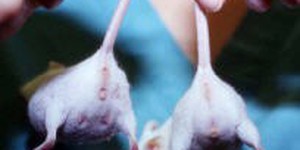High School, Mammalian Biology Science Projects (7 results)
Do you love furry animals — studying them or even playing with them? Maybe you wonder why your pet loves that certain ball, or shakes hands with one paw more than the other. Or maybe you are curious about how bats navigate through the dark. Then you're sure to enjoy learning about mammalian biology with your pet or other friendly animals you know!
|
Select a resource
Sort by
|
Have you ever seen a tortoiseshell cat? "What kind of cat is that?" you might ask. A tortoiseshell cat has two different fur colors, black or brown and red or orange. The gene that gives rise to the red or orange fur color is on the X chromosome. And did you know that most tortoiseshell cats are female? That's because female cats have two X chromosomes, while males only have one, which allows the females to express two different color combinations! Try this science fair project to figure out…
Read more
Featured
Have you heard that garlic powder is supposed to inhibit the growth of bacteria? Which do you think would make a better disinfectant: a solution of garlic powder or a solution of bleach? This project shows you a straightforward way to compare the effectiveness of different disinfectants (or other antimicrobial agents), by measuring zones of inhibition on a culture plate.
Read more
The great majority of people have a distinct hand preference. How about animals like dogs or cats? Do they show a paw preference? If you like animals, this science fair project might be for you.
Read more
New
Engineers are trying to tackle the world's ocean pollution problem using robots. Some robots, like Mr. Trash Wheel and the ship featured in this Mark Rober video, are stationary and collect trash as it flows out of rivers before it gets into the ocean. Others, like the Jellyfishbot, are mobile and can squeeze into narrower spaces to collect trash:
Can you build and test your own trash-skimming robot? If you do not have access to a natural body of water to test it in, you can use a bathtub or a…
Read more
Do you have bats in your neighborhood? Have you heard them "whoosh" by you, but not been able to see them? In this science fair project, you will be able to detect flying bats by listening in on the ultrasonic signals they produce to locate objects in their environment. The bat detector is a useful and fun tool for studying the biology of this nocturnal flying mammal.
Read more
Cats are great house pets, but as every cat observer knows, they are also instinctive hunters. This experiment provides an interesting way to learn about cat behavior. You'll play bird call recordings for pet cats, and watch to see if the cat pays attention to the sound (by turning towards it) or ignores it. Will a pet cat distinguish between the calls of local birds vs. non-local birds?
Read more
As your mom and dad always tell you, a healthy diet is important to good health. This project is designed to see what happens to mice when they are allowed to load up on sugary snacks. Do you think that they will gain excess weight? Do you think that the mice will regulate their own intake and maintain a 'healthy' diet? You can try this project and find out for yourself.
Read more
New
Does your dog get bored when you are not home? Do you ever toss them a few treats right before you head out the door? What if you could keep them busy by automatically dispensing treats throughout the day? What about training them to sit in a certain place or even press a button by automatically rewarding them with treats? In this project you will build your own automatic dog (or cat, or other pet) treat dispenser that you can customize to react to different sensors.
Read more
Mice, rats, and other rodents are typically nocturnal animals; that is, their activity level is highest at night. For this science fair project, you will build a device that records your pet's activity by monitoring movement of its exercise wheel to see how it varies during the day and night. You can also experiment with various ways of changing your pet's cycle of activity; for example, by playing with it during the day when it's normally resting.
Read more
You have probably heard about left-brain and right-brain differences in people. The left brain is supposed to be better at language, and organizing sequential actions, the right brain is supposed to be better at visualizing orientations in space, making and listening to music, and deciphering the emotions of others. Is there evidence for left/right brain specialization in other animals? This project examines tail-wagging in dogs. Does tail-wagging show any evidence of left/right brain…
Read more
|
Explore Our Science Videos
How to Make Magnetic Slime
Write and Read Braille – STEM activity
Make a Whirlybird from Paper













